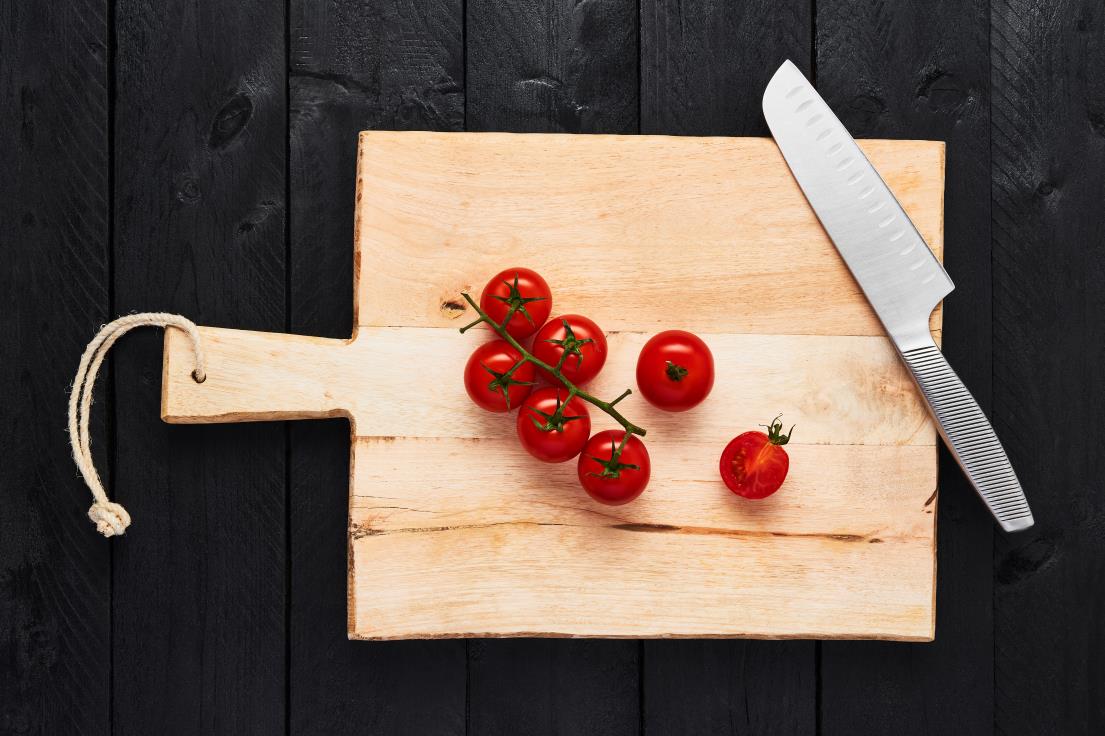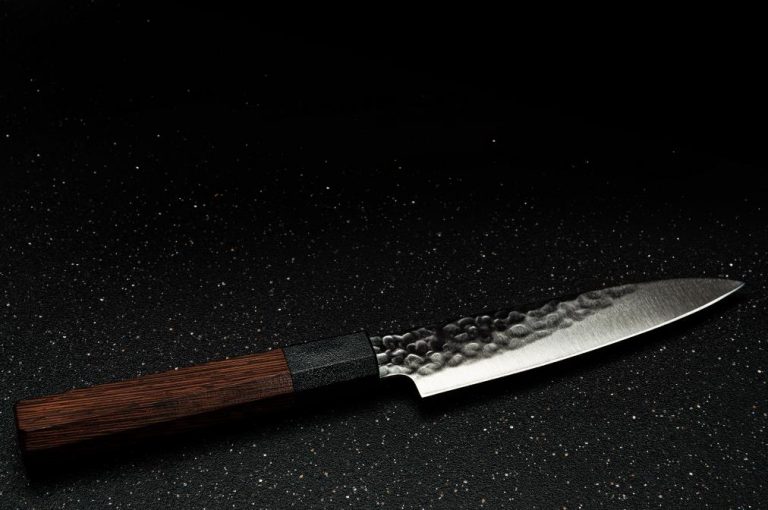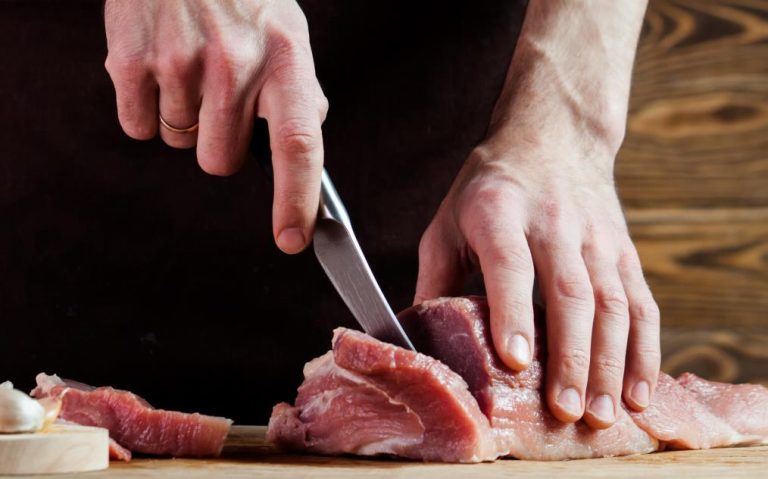Most people are only familiar with the handle or blade of a knife. However, there is a lot more to a knife than what we first see.
A knife consists of many components such as a tang, a spine, an edge, rivets, and a few more that can change a knife completely. One of these parts is a bolster that connects the handle and the blade. It looks seemingly unimportant but it matters quite a lot.
In this article, we will get into the types of knife bolsters, the differences between Japanese vs Western knife bolsters, and discuss which ones you should choose.
Let’s dive in!
What is a knife bolster?
A knife bolster is the small metal bridge between the blade of a knife and its handle. Not all knives have a bolster but some prefer bolsters as it is arguably easier to use.
The main reason to consider a knife with bolster is that it provides a safety net for your fingers. There are fewer chances of your fingers slipping and cutting if there is a protection in present.
Granted, professional chefs who don’t use knives with bolsters already use them in a safe way. But, it can be a game changer for those who are just getting started. Chefs, however, often use knives with bolsters when filleting fish or cutting meat since these objects can cause your hand to slip.
There are two types of bolsters; full and semi, each having its advantages and disadvantages. Let’s take a look at those now.
What is a full bolster?

A full bolster goes completely from the knife handle to the bottom of the knife blade. This extension leads to a groove that serves as protection for your fingers.
Although, some knives can be forged in a way that the handle curves to create a finger guard without the need for a bolster.
The shape and weight of this knife will change the way how the knife works so you may need to use some extra strength to do normal chores with this one.
Pros of a full knife bolster
- It provides safety for your fingers.
- It is safer to use than other types, especially for beginners.
Cons of a full knife bolster
- It is heavier, thus the balance of a full bolster knife lean towards the handle. It requires more effort for regular cutting
- It can not be sharpened easily (you may even need to get it professionally sharpened)
What is a semi bolster?

A semi or half bolster doesn’t fully extend to the bottom of the blade. Instead, as its name suggests, it goes halfway and gives a better shape to the knife.
It doesn’t have a finger guard but with some practice, you won’t really need it anyway. Furthermore, due to its slanting shape, it is much easier to sharpen it yourself compared to a full bolster.
Pros of a semi knife bolster
- The shape allows easy sharpening.
- It is more comfortable to use since it’s lighter in weight.
- It can be used in a variety of culinary tasks.
Cons of a semi knife bolster
- It doesn’t give a lot of protection to your fingers
Which one should you choose?
Now the question arises that which knife should one choose – with a bolster, that too full or half, or without?
The thing is that there is no right answer. It depends on the usage of the chef and the preference of whether they want some extra protection or not.
However, there are elements that you might prefer in a knife that will help you to pick one.
Cutting performance

Using knives is all about efficiency.
If you feel confident when picking up a knife and cutting through items then you are more likely to do the work more efficiently.
The full bolster knife lacks in the speed department. Since it’s a more significant piece of metal, it makes the knife heavy. This means that when you pick it up to chop up some veggies, you will have to put more effort into each slice.
On the other hand, this one excels in the safety realm as we’ve already discussed. Another option is to keep a full bolster knife just for slippery items such as when you want to bone fish or clean meat.
The semi bolster is kind of the best of both worlds. Not to mention that it looks aesthetically pleasing with that slanting edge. This type of knife provides a bridge between the blade and the handle so, in case of a finger slip, your hand won’t immediately meet with the blade.
It also allows you to sharpen the knife easily unlike the full bolster knife which is a bonus. Furthermore, it can be used on most occasions from dicing to mincing.
Lastly, you have the option of getting a knife with no bolster.
The most common reason why most people prefer this knife is that it is the easiest to sharpen and to control. After all, sharpening is an integral part of using a knife. And a sharp knife equals a good one.
Of course, without a bolster, the knife is lighter in weight which contributes to its ease of use. However, for some people, getting a knife with no bolster affects their grip. Since there is no finger protection, working with a no bolster for long periods of time can cause indents or blisters on your fingers.
The pricing
Another important thing apart from the feel is how much each knife costs.
Since there is additional metal required to make bolsters, knives with bolsters are generally more expensive than the ones without.
There is no hard and fast rule about pricing knives since it depends on how they are made and other factors as well apart from bolsters.
Customized knives are always in demand and hard to come by in bulk so if you are looking for those things, you can contact us to get a specific number.
Buy Wholesale Knives and Start Scaling up with Us Today
Contact us and connect with a sales rep to get a free quote.
The verdict
The question remains, which one should you go for?
By now, you know why all these different types of knives are used. There is a demand for all of them based on preference.
You can get those in bulk which seem to sell more in your area. To learn more about how to bulk order from us, read until the end of this article.
Japanese vs western style knife bolsters
Most Japanese knives do not come with a bolster. Even though there are options on the market, manufacturing no bolster knives is undoubtedly their expertise.
Traditionally, Japanese knives, specifically ones with a wa handle don’t have a bolster. Even when a bolster is present, it is often made from buffalo horn which prevents the natural wood handle from breaking. This is done so that the knife does not get heavy which can be a problem for full bolster knives.
Japanese knives even with a full bolster, usually with yo handles are blade-heavy since they use light material for their bolster. But they shine best in manufacturing knives with no bolsters by soldering the tang to the handle.
On the other hand, western-style knives with bolsters are handle-heavy since these knives are made with strong materials for the handle, unlike wood. German knives tend to have a curvier edge which makes them easy and comfortable to grip.
Like Japanese knives, German knives are available in both types. But, unlike the Japanese, Western knives with bolsters are more common.
Conclusion
As you might’ve guessed by now, everyone will have their own preference as to whether they want a knife with or without a bolster depending on their usage.
So, your best bet would be to either have a variety or to pick the one that is the most popular in your area.
If you are looking for customized knives that are built from scratch, LeeKnives provides OEM and ODM services along with global shipping that could help you build a star product. Request a free quote from us today.







